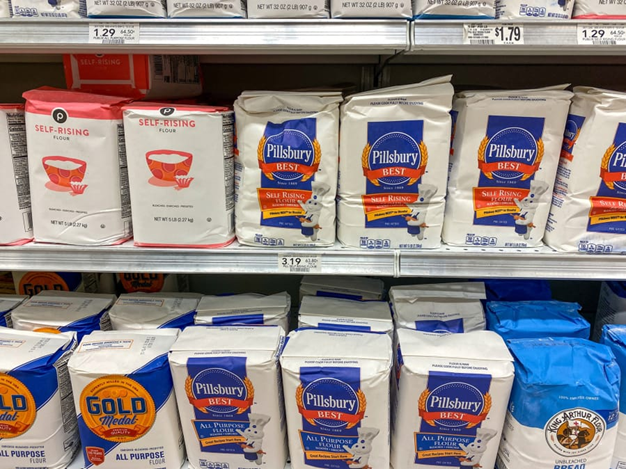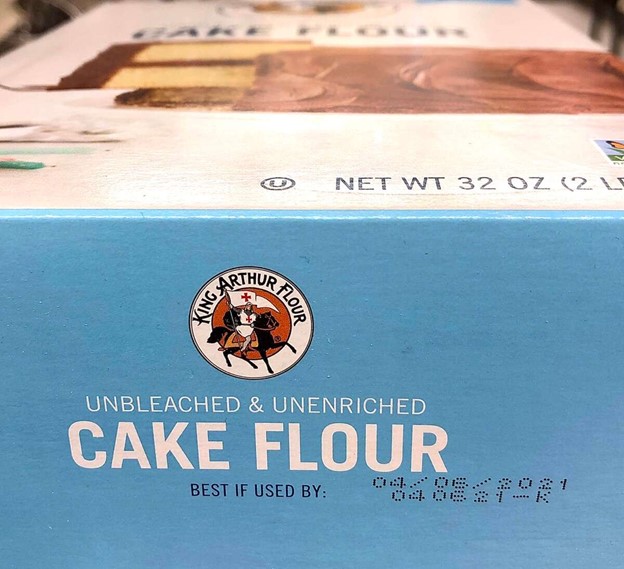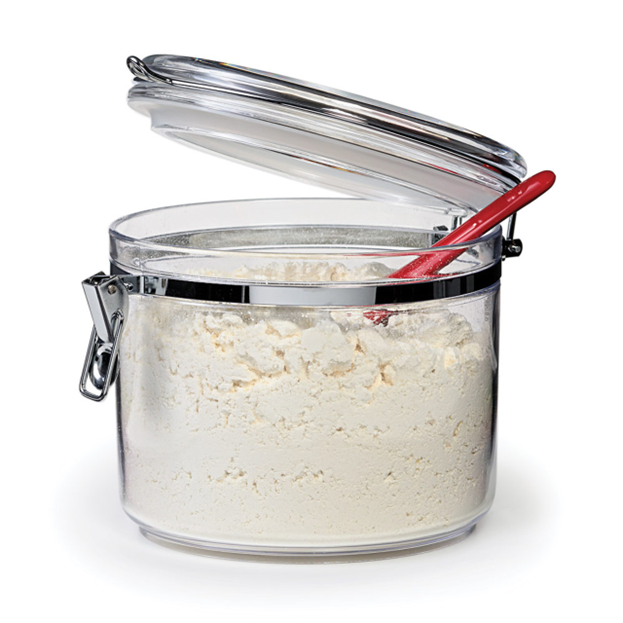Did You Know Flour Doesn’t Keep FOREVER?
What’s more, different types of flour last longer on the shelf than others. The folks at America’s Test Kitchen (ATK) did some recent research on the topic.

ATK editor and former professional baker, Sarah Sandler, tells us, “While flour is considered a proverbial pantry ingredient, unlike a can of beans or a box of pasta, it doesn’t last in the pantry for years on end. Depending how often you use your flour and what types you regularly keep on hand, storage recommendations can vary.”
She goes on to explain that generally speaking, refined white flour that sits in its unsealed bag lasts for about a year from when it is packaged. This is important to know, considering we have no realistic idea when that flour was packaged. The “Best Used By” date on the package gives us some sort of information as to how long the flour has been around (maybe?), but mostly we have to guess at this.

After that, the quality begins to deteriorate and the flour may take on an unpleasant flavor and scent. “MAY take on an unpleasant flavor and scent?” Oh brother, is that an understatement. I opened a container of flour we’d had in our food storage for about 3 years and it gave off such a nasty aroma I had to turn my head away. And the taste was positively gross—gaggy.
Can any of you relate? This is so disappointing. None of us wants to throw food away. So this said, here are Sarah’s tips for how to keep your flour fresh. (And here’s a THANK YOU to Sarah and all the folks at ATK for their careful research and generous sharing of their findings!)
USE AN AIRTIGHT CONTAINER; KEEP IT IN A COOL, DRY PLACE. All types of flour should be stored in an airtight container after opening. It'll keep roughly the same length of time as an open package (about a year), but the advantage is that the container will keep out air, humidity, and pesky bugs and critters. Stored in a cool, dry place, it will keep its flavor and stay useable for up to 6 months.

CONSIDER STORING WHOLE GRAIN AND STONE-GROUND FLOUR IN THE FREEZER. These flours, which have some bran and germ in them, contain more fat and can go rancid more quickly than white all-purpose and bread flour. Stored in the freezer, it will last indefinitely.
BUY ONLY WHAT YOU NEED if you don’t have extra freezer space. Smaller quantities will serve you best (especially when it comes to whole-grain and stone-ground flours). You’ll be replacing them a little more often, but the risk of them going nasty is avoided.
Finally, RELY ON YOUR SENSES. If your flour looks or smells different than when you bought it, it’s probably time to toss it. It’s easy to see bugs or any change in color in white flour but a little trickier in a bag of whole-grain or stone-ground flour that actually comes with specks of bran and germ. Relying on smell is your best bet. If it smells musty or sour, it’s time for a new bag.

One last thought for us frugal types: If your flour has gone wrong, with a bit of imagination, it could still be used. I’ll close with these ideas:
A stumbling block for ants! Ants will not traverse a flour-covered area, so locate their entry point and sprinkle some flour on it.
For paper-mâché. To make a moldable paste, combine glue, water, and flour.

For homemade Playdough.® Combine the flour, water, and food coloring, and bake for 30 minutes at a low temperature.
blog comments powered by Disqus

ATK editor and former professional baker, Sarah Sandler, tells us, “While flour is considered a proverbial pantry ingredient, unlike a can of beans or a box of pasta, it doesn’t last in the pantry for years on end. Depending how often you use your flour and what types you regularly keep on hand, storage recommendations can vary.”
She goes on to explain that generally speaking, refined white flour that sits in its unsealed bag lasts for about a year from when it is packaged. This is important to know, considering we have no realistic idea when that flour was packaged. The “Best Used By” date on the package gives us some sort of information as to how long the flour has been around (maybe?), but mostly we have to guess at this.

After that, the quality begins to deteriorate and the flour may take on an unpleasant flavor and scent. “MAY take on an unpleasant flavor and scent?” Oh brother, is that an understatement. I opened a container of flour we’d had in our food storage for about 3 years and it gave off such a nasty aroma I had to turn my head away. And the taste was positively gross—gaggy.
Can any of you relate? This is so disappointing. None of us wants to throw food away. So this said, here are Sarah’s tips for how to keep your flour fresh. (And here’s a THANK YOU to Sarah and all the folks at ATK for their careful research and generous sharing of their findings!)
USE AN AIRTIGHT CONTAINER; KEEP IT IN A COOL, DRY PLACE. All types of flour should be stored in an airtight container after opening. It'll keep roughly the same length of time as an open package (about a year), but the advantage is that the container will keep out air, humidity, and pesky bugs and critters. Stored in a cool, dry place, it will keep its flavor and stay useable for up to 6 months.

CONSIDER STORING WHOLE GRAIN AND STONE-GROUND FLOUR IN THE FREEZER. These flours, which have some bran and germ in them, contain more fat and can go rancid more quickly than white all-purpose and bread flour. Stored in the freezer, it will last indefinitely.
BUY ONLY WHAT YOU NEED if you don’t have extra freezer space. Smaller quantities will serve you best (especially when it comes to whole-grain and stone-ground flours). You’ll be replacing them a little more often, but the risk of them going nasty is avoided.
Finally, RELY ON YOUR SENSES. If your flour looks or smells different than when you bought it, it’s probably time to toss it. It’s easy to see bugs or any change in color in white flour but a little trickier in a bag of whole-grain or stone-ground flour that actually comes with specks of bran and germ. Relying on smell is your best bet. If it smells musty or sour, it’s time for a new bag.

One last thought for us frugal types: If your flour has gone wrong, with a bit of imagination, it could still be used. I’ll close with these ideas:
A stumbling block for ants! Ants will not traverse a flour-covered area, so locate their entry point and sprinkle some flour on it.
For paper-mâché. To make a moldable paste, combine glue, water, and flour.

For homemade Playdough.® Combine the flour, water, and food coloring, and bake for 30 minutes at a low temperature.
 Alice Osborne
Alice Osborne
Weekly Newsletter Contributor since 2006
Email the author! alice@dvo.com
Sources:
- www.columbian.com
- www.kingarthurbaking.com
- www.kingarthurbaking.com
- www.thecoconutmama.com
- www.facebook.com
